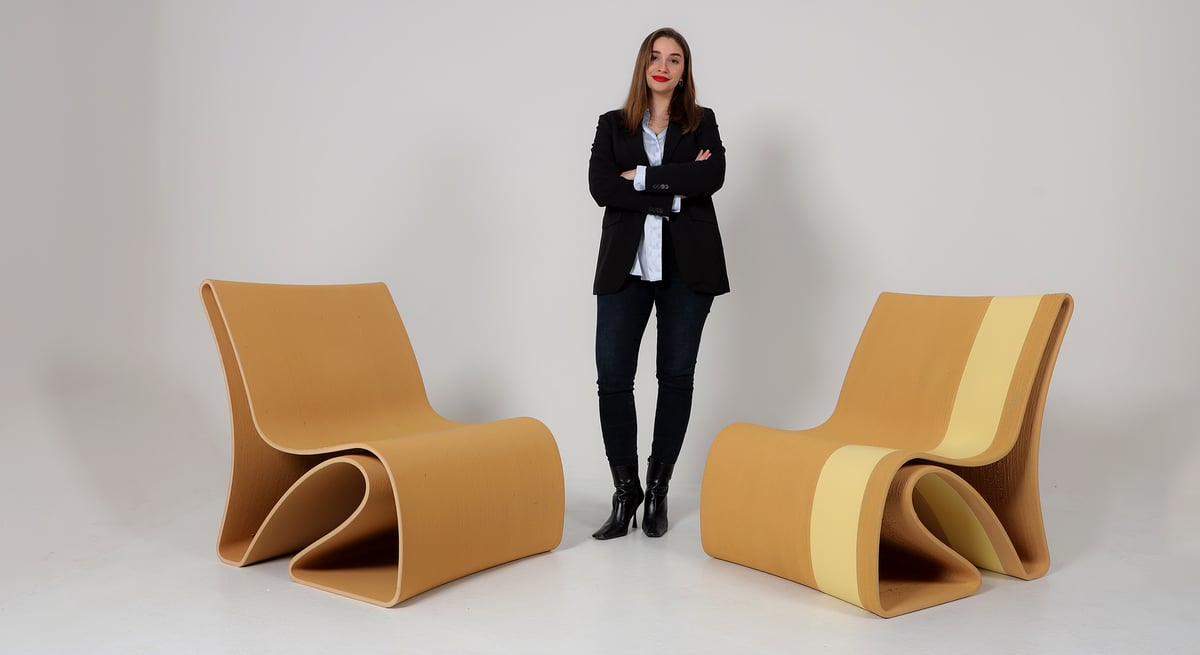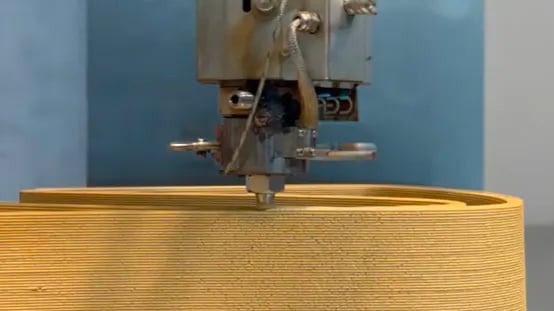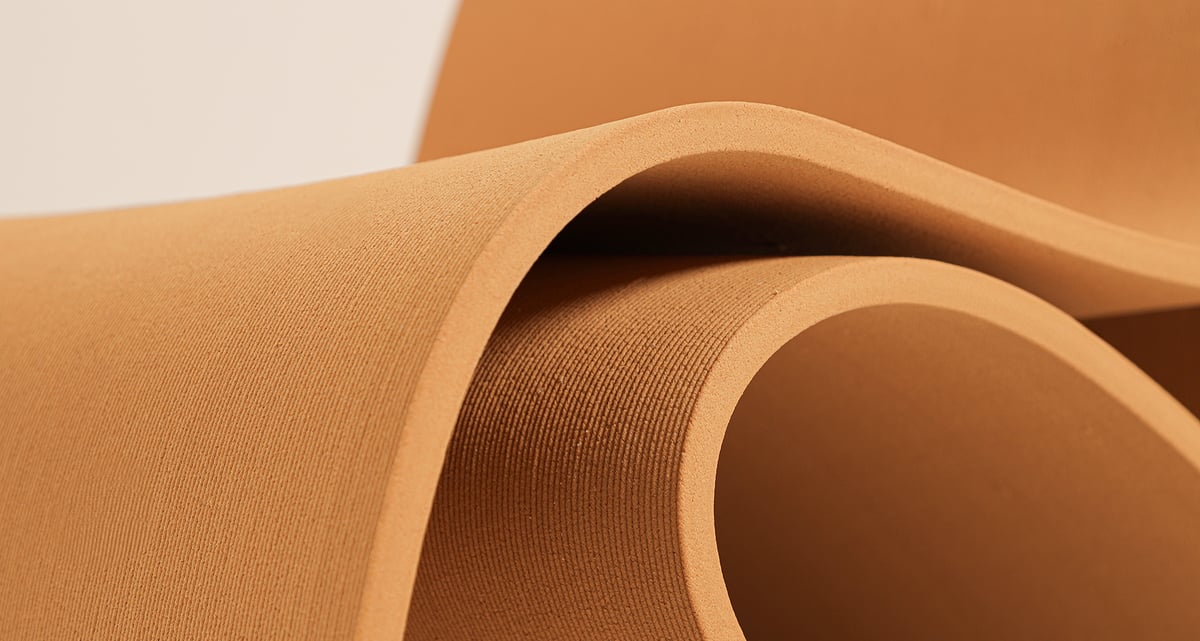Young Turkish architect Türkiye Simge Goorany sees a future where beautiful, functional furniture also protects the environment. She founded Circula to deliver on that vision. Its first fruit is a 3D printed lounge chair made using wood and polymer composite material.
“At Circula, we are committed to using eco-friendly alternative materials in the furniture market,” she says. “Our bio-composite material is made with up to 51% agricultural waste or sawdust, which reduces the amount of material sent to landfills.” And it gives the Wood-Loop lounge chair a nice wood smell.

Each item is 3D printed to order, eliminating overstock. Any waste material from creating one chair is recycled into creating the next one.
“We see furniture as a service, and we’re making a bold move by taking the responsibility to be circular,” says Goorany. Estimates are that up to 90% of furniture waste is either incinerated or sent to landfills, with less than 0.3% being recycled.

3D Printing for Sustainable Furniture
Circula uses a 3D printer consisting of a CEAD material extruder with a Kuka robotic arm in collaborated with the Integrated Manufacturing Technologies Research and Application Center at Sabanci University in Istanbul, Turkey.
Large-scale robotic arm 3D printing technology, which follows the path determined by a digital design file, is rapidly becoming a widely used method in the sustainable furniture industry.
There are chairs 3D printed from recycled fishing nets, from plastic bottle waste, and even old Tetra Pak containers. The method is also used for concrete chairs, such as from designer Philipp Aduatz.
Robotic arm 3D printing technology could enable Circula to reducing carbon emissions from shipping, as well, by 3D printing the furniture closer to customers.
“Currently, we can print in Istanbul but want to develop printing partnerships in Europe,” says Goorany.

Sustainable Materials Are the Key
By using raw materials in a pellet form — in this case the Stora Enso wood composite pellets — Circula can make various furniture pieces quickly and efficiently, with almost no waste.
“Our minimalistic design prioritizes comfort while also fitting seamlessly into contemporary residential and non-residential indoor spaces such as offices, retail stores, and homes,” says Goorany.
Circula’s Wood-Loop lounge chair can be customized, and while durable enough for commercial use, at the end if its life, it can be recycled. Circula offers customers a continuous upcycling option where chairs can be sent in to be recycled into new chairs extending the material’s life.

Circula has been selected as one of the 10 startups for the UK Government’s Climate Finance Accelerator Program in 2023, which is supported by PWC Türkiye and the UK. This signals a shift in policy making towards low-carbon manufacturing.
“Our mission goes beyond crafting unique furniture; we aim to reshape the industry’s ecological footprint,” says Goorany. “Through Wood-Loop, we strive to inspire a positive change in the way furniture is designed, produced, and consumed. Our goal is to lead the way in circular furniture and spaces, setting a benchmark in the industry.”
Circula’s Wood-Loop
- Product: Wood-Loop Lounge Chair
- Materials: %51 Wood Fiber, %49 Polymer Biocomposite from Stora Enso
- Recyclability: %100 Recyclable
- Fabrication Method: Robotic 3D Printing via CEAD print head and Kuka Robotic Arm
- Project Team: Türkiye Simge Goorany (lead) Ege Tıkız, Onur Argün, Can Kızılkuş, Ada Defne Dokuzoğlu, and Bengü Özmutlu (creative project consultant)
- Fabrication Consultant: Sarp Gönülkırmaz, Sabanci University IMC – Integrated Research and Application Center
Lead image source: Photos by Berkay Ay
License: The text of "Not Your Parents’ Wooden Chair" by All3DP Pro is licensed under a Creative Commons Attribution 4.0 International License.


